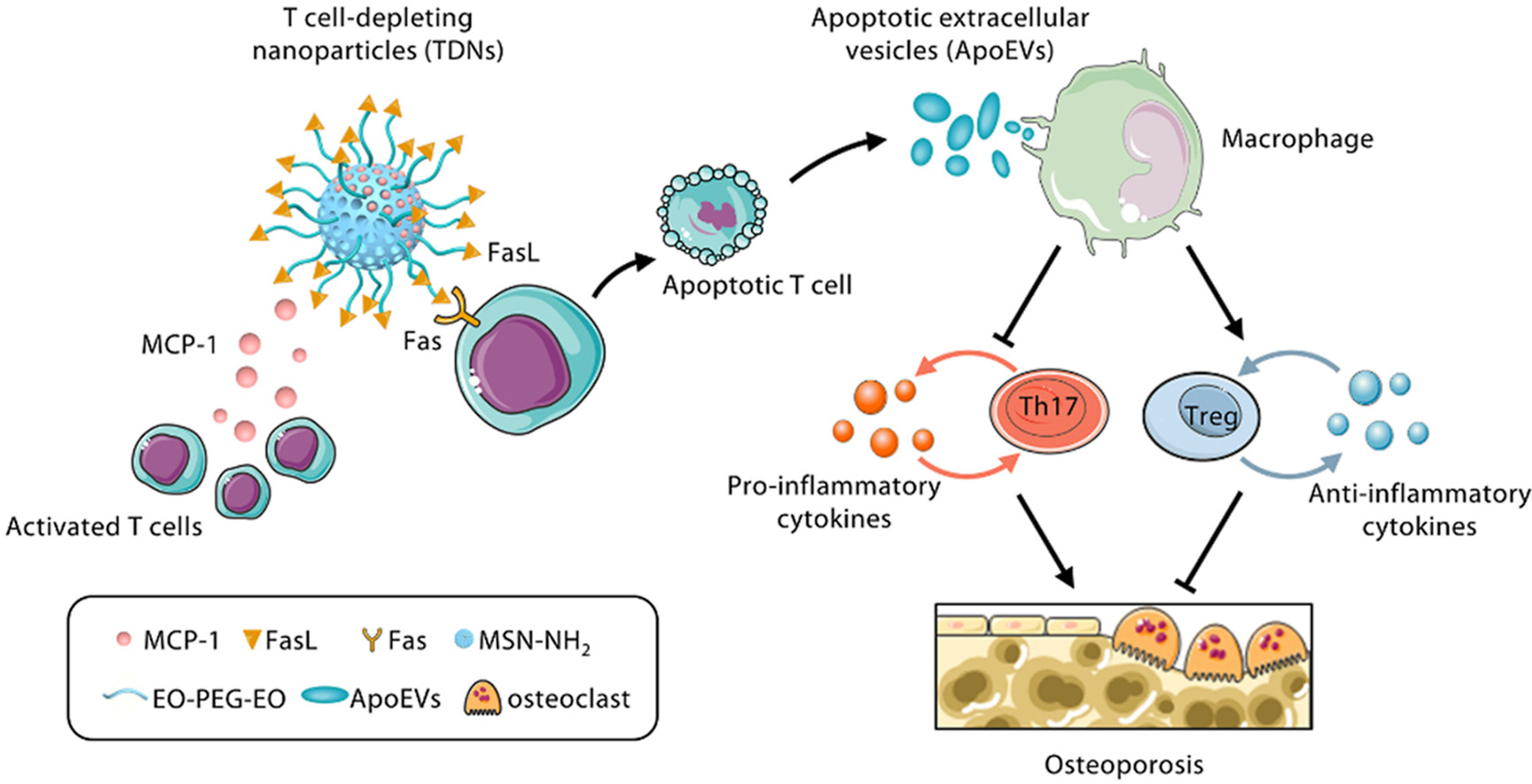恭喜袁萍耘在Bioactive materials发表文章 - 个人简介 - 陈 鑫
T cell-depleting nanoparticles ameliorate bone loss by reducing activated T cells and regulating the Treg/Th17 balance
Abstract: Estrogen deficiency is one of the most frequent causes of osteoporosis in postmenopausal women. Under chronic inflammatory conditions caused by estrogen deficiency, activated T cells contribute to elevated levels of proinflammatory cytokines, impaired osteogenic differentiation capabilities of bone marrow mesenchymal stem cells (BMMSCs), and disturbed regulatory T cell (Treg)/Th17 cell balance. However, therapeutic strategies that re-establish immune homeostasis in this disorder have not been well developed. Here, we produced T cell-depleting nanoparticles (TDNs) that ameliorated the osteopenia phenotype and rescued the osteogenic deficiency of BMMSCs in ovariectomized (OVX) mice. TDNs consist of monocyte chemotactic protein-1 (MCP-1)-encapsulated mesoporous silica nanoparticles as the core and Fas-ligand (FasL) as the corona. We showed that the delicate design of the TDNs enables rapid release of MCP-1 to recruit activated T cells and then induces their apoptosis through the conjugated FasL both in vitro and in vivo. Apoptotic signals recognized by macrophages help skew the Treg/Th17 cell balance and create an immune tolerant state, further attenuating the osteogenic deficiency of BMMSCs and the osteopenia phenotype. Mechanistically, we found that the therapeutic effects of TDNs were partially mediated by apoptotic T cell-derived extracellular vesicles (ApoEVs), which promoted macrophage transformation towards the M2 phenotype. These findings demonstrate that TDNs may represent a promising strategy for treating osteoporosis and other immune disorders.

DOI: 10.1016/j.bioactmat.2021.02.034
-
2021
08-27
-
2021
08-03
-
2021
06-12
-
2021
04-18
-
2021
03-18
-
2021
02-24

 (创新港)
(创新港)


